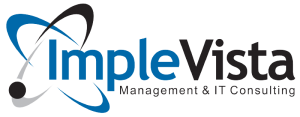The success of a company depends on effective document management in the fast-paced corporate world of today. A Document Management System (DMS) improves overall productivity by streamlining document security, retrieval, and storage for enterprises in Bangladesh. Regardless of how big or small your company is, putting in place a strong DMS may revolutionize your business processes.
Organizations in Bangladesh are understanding the value of having a centralized system to handle their papers as the country continues to move toward digital transformation. A DMS helps businesses stay competitive in the digital age by guaranteeing operational efficiency, cost savings, and data security for both government and commercial organizations.
What is a Document Management System?
Software created to arrange, store, handle, and monitor electronic documents is known as a document management system. It guarantees data security, enhances productivity, and makes file access simple. DMS solutions are being used by businesses in Bangladesh more and more to cut down on paperwork, improve teamwork, and adhere to legal standards.
From production and storage to retrieval, sharing, and archiving, a DMS facilitates every stage of the document lifecycle. Additionally, it assists in automating processes, decreasing human error, and guaranteeing adherence to legal and sector-specific requirements.
The Importance of a Document Management System in Bangladesh
Digital Management System (DMS) is becoming an essential part of Bangladesh’s fast adoption of digital solutions across industries. The following justifies Bangladeshi companies’ investments in document management systems:
- Enhanced Security – Protects sensitive business information through encryption and access controls.
- Improved Efficiency – Automates document-related processes, reducing manual handling and errors.
- Cost Savings – Reduces printing, storage, and administrative costs.
- Regulatory Compliance – Ensures adherence to legal and industry-specific regulations.
- Remote Access – Enables employees to access documents from anywhere, promoting flexible work arrangements.
- Better Collaboration – Facilitates seamless document sharing and teamwork across departments.

Benefits of Using a Document Management System
For any business, managing a large number of papers and data may be difficult. Effective document management is essential for organizations of all kinds, including NGOs, universities, hospitals, and enterprises. To do business with stakeholders and consumers, build connections, assess markets, and make well-informed choices, these businesses rely on vast amounts of data. A Document Management System (DMS) is essential for efficiently managing, tracking, retrieving, and sharing digital material, including PDFs, Microsoft Word documents, and photos.
Digital documents may be easily stored, retrieved, shared, and organized with the use of software called a Document Management System (DMS). It enables companies to accomplish their goals more quickly by giving workers, customers, and suppliers rapid and simple access to vital information.
When it comes to digitizing paper records and managing different kinds of important documents in contemporary workplaces, DMS solutions provide a centralized, automated platform. A DMS is occasionally confused with a content management system since it is frequently a component of an Enterprise Content Management (ECM) system, which also includes workflow systems, digital asset management, document imaging, and records management. But its special concentration is on duties connected to documents.
Advanced features provided by cloud-based DMS solutions are advantageous to organizations seeking to improve their document management capabilities. These characteristics include enhanced collaboration, version control, governance tools, and strong network security.
Key Benefits of a Document Management System
- Improved Organization: Centralizes all documents, making them easily accessible and reducing the risk of data loss.
- Enhanced Efficiency: Automates document workflows, saving time and minimizing manual errors.
- Better Collaboration: Facilitates seamless sharing and editing of documents among teams, regardless of location.
- Advanced Security: Protects sensitive information through encryption, role-based access controls, and audit trails.
- Regulatory Compliance: Simplifies adherence to legal and industry regulations through systematic document tracking and management.
- Cost Savings: Reduces expenses associated with paper, printing, storage, and administrative tasks.
- Remote Accessibility: Supports remote work environments by enabling secure access to documents from anywhere.
- Disaster Recovery: Ensures data backup and quick recovery in case of system failures or data breaches.
- Version Control: Maintains document integrity by tracking revisions and ensuring that the latest versions are always available.
- Automated Workflows: Streamlines processes such as digital signatures and approval flows, enhancing productivity.
Benefits of Document Management Systems
Improved Workflows: Routine tasks are automated by DMS, which streamlines document-related procedures and minimizes manual involvement. This results in increased productivity and quicker decision-making.
Better Security: Strong security measures that guard against data breaches and unwanted access include audit trails, access limits, and encryption.
Easier Regulatory Compliance: By offering data tracking, safe storage, and simple access to required paperwork, a DMS assists companies in adhering to industry and regulatory requirements.
Time and Money Savings: DMS saves a great deal of money and time by automating processes, reducing paperwork, and lowering storage requirements.
Benefits of Implementing a Document Management System in Bangladesh
- Improved Efficiency: Automate document handling processes, reduce manual work, and speed up information retrieval.
- Cost Savings: Reduce paper usage, printing, and physical storage costs, leading to significant savings over time.
- Enhanced Security: Protect sensitive information with encryption, multi-factor authentication, and role-based access controls.
- Regulatory Compliance: Ensure adherence to industry regulations and standards, such as data protection laws and ISO certifications.
- Remote Accessibility: Access documents from anywhere using secure cloud platforms, supporting remote work and business continuity.
- Disaster Recovery: Safeguard critical documents through secure backups and disaster recovery solutions.
- Better Collaboration: Enable real-time document sharing and collaboration among teams, improving productivity and communication.
For businesses looking to safeguard sensitive data in the current digital era, increase operational efficiency, and optimize document handling, implementing a document management system is a wise investment.
Key Features of a Document Management System
- Centralized Document Storage: Securely store all documents in one digital repository, reducing the risk of data loss and enhancing organization.
- Version Control: Track document changes, maintain a history of edits, and ensure that team members are always working on the latest version.
- Access Control: Define user permissions to ensure data confidentiality, allowing only authorized personnel to view, edit, or share documents.
- Search and Retrieval: Quickly find documents using advanced search functionalities, including keyword searches, metadata tags, and filters.
- Integration: Seamlessly integrate with other business software like CRM, ERP, and project management tools for enhanced productivity.
- Audit Trails: Maintain detailed records of document activities, such as edits, views, and shares, for compliance and security purposes.
- Automated Workflow: Automate repetitive tasks like document approval, notifications, and routing to improve efficiency.
How Document Management Systems Work
Document Capture: Paper documents are converted into digital representations using scanners, mobile devices, or specialized capture software. This guarantees that every paper document is converted to digital format for convenient storage and access.
Document imaging is the process of converting paper documents into electronic images that may be shared and accessed within a company. This improves data integrity and lowers the possibility of document loss.
Indexing: Through the assignment of metadata or tags, indexing arranges documents to facilitate precise and speedy searches. It makes finding documents using keywords, dates, or categories easier.
Version Control: Version control monitors how documents change over time. It avoids data discrepancies, ensures the most recent version is always accessible, and aids in keeping track of revisions.
Examples of Document Management Systems
Popular Document Management Systems include:
- Egnyte: A cloud-based DMS offering secure file sharing, compliance management, and collaboration tools.
- Revver: Known for its user-friendly interface and advanced document automation features.
- DocuWare: Offers comprehensive document management with robust security and workflow automation.
- LogicalDOC: An open-source DMS that provides flexible document storage and efficient retrieval options.
- Google Drive: A widely used cloud storage solution with easy document sharing and collaboration features.
- Microsoft OneDrive: Integrated with Microsoft Office, OneDrive offers seamless document management and sharing capabilities.
- Dropbox: A popular cloud-based platform for storing, sharing, and collaborating on documents.
- Microsoft SharePoint: A robust DMS designed for enterprise-level document management, collaboration, and content management.
Types of Document Management Systems
- On-Premise DMS: provided total control over data security and customization when locally installed on business systems. Perfect for companies with high standards for data privacy.
- Cloud-Based DMS: Online hosting that offers remote access, scalability, and flexibility. All sizes of firms may use it, but those that embrace remote work will benefit most.
- Hybrid DMS combines cloud and on-premise capabilities to provide both advantages. Businesses with a variety of document management requirements will find this suitable.
Choosing the Right Document Management System for Your Business
When selecting a business document management system, consider the following factors:
- Business Needs: Identify specific requirements like compliance, collaboration, or security.
- Scalability: Ensure the system can grow with your business, accommodating increasing document volumes and users.
- User-Friendliness: Opt for intuitive interfaces to ease adoption and minimize training requirements.
- Support and Training: Check for vendor support, training resources, and regular system updates.
- Customization: Look for DMS solutions that can be tailored to your unique workflows and processes.
- Cost: Evaluate the total cost of ownership, including licensing, implementation, and maintenance expenses.
Implementation Best Practices for a Document Management System
- Assess Your Current Processes: Understand your existing document workflows to identify areas for improvement.
- Define Clear Objectives: Set specific goals for implementing the DMS, such as reducing manual errors or improving compliance.
- Involve Key Stakeholders: Engage employees, IT teams, and management to ensure alignment and smooth adoption.
- Data Migration Plan: Develop a strategy for migrating existing documents to the new system securely and efficiently.
- Training and Support: Provide comprehensive training for users and establish ongoing support channels.
- Monitor and Optimize: Regularly review system performance and user feedback to make necessary adjustments.
How to Choose the Right Document Management System
Consider these factors when selecting a DMS for your business:
- Business Requirements: Identify needs like compliance, collaboration, and security.
- Scalability: Ensure the system grows with your business.
- Ease of Use: Choose user-friendly interfaces to simplify adoption.
- Support & Training: Look for vendor support, training resources, and regular updates.
- Customization: Opt for systems that adapt to your workflows.
- Cost Efficiency: Evaluate costs, including licensing, implementation, and maintenance.
How Implevista Can Help
Implevista, a reputable partner in Bangladesh, provides customized DMS solutions to satisfy your company’s requirements. Our experience guarantees smooth integration, deployment, and continuing assistance. We provide:
- Customizable DMS Solutions: Designed to align with your business goals.
- Expert Consultation: Guidance on selecting the right DMS for your organization.
- Comprehensive Training: Ensuring your team can fully utilize the system.
- Ongoing Support: Dedicated support for troubleshooting, updates, and optimizations.
Real-World Case Study
Case Study: Enhancing Document Efficiency for a Leading Bangladeshi Corporation
Managing enormous amounts of paper records presented difficulties for a well-known company in Dhaka, resulting in inefficiencies and security threats. By putting in place a cloud-based online document management system, Implevista made it possible for:
- 50% reduction in document retrieval time.
- Enhanced data security with role-based access controls.
- Improved collaboration across multiple departments.
The company reported significant cost savings and improved operational efficiency within six months.

FAQs About Document Management Systems
- What is a Document Management System?
A DMS is software that helps manage, store, and track electronic documents efficiently.
- What are the benefits of using a DMS?
Benefits include improved efficiency, cost savings, enhanced security, and regulatory compliance.
- Can small businesses in Bangladesh benefit from a DMS?
Yes, DMS solutions can be scaled to fit businesses of all sizes, improving productivity and security.
- What are the types of document management systems?
Types include on-premise, cloud-based, and hybrid systems.
- How does a DMS enhance security?
It uses encryption, access controls, and audit trails to protect sensitive information.
- Is it difficult to implement a DMS?
With the right planning and support from experienced providers like Implevista, DMS implementation is straightforward.
- Can a DMS integrate with existing software?
Yes, modern DMS solutions can integrate with ERP, CRM, and other business tools.
Ready to streamline your business processes with a reliable Document Management System in Bangladesh? Contact Implevista today to discover how we can help your organization achieve greater efficiency, security, and productivity.
Document Management System in Bangladesh

How Document Management Systems in Bangladesh enhance efficiency: features, benefits, and types.
Price: 1000
Price Currency: USD
Operating System: Windows, Linux, Mac
Application Category: ENTERPRISE APPLICATION
4.89




